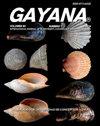从Artemia franciscana (Kellogs, 1906)(甲壳纲:Anostraca)角质层表面提取的脂肪酸甲酯可提高同种雄鱼的游泳速度
IF 0.2
4区 生物学
Q4 ZOOLOGY
引用次数: 1
摘要
先前的研究已经确定,一些微甲壳类动物的游泳速度受到同种生物释放的化合物的影响。我们研究了一种假说,即在同种雄性蒿属植物中分布最广的a . franciscana体表存在的表皮化合物对其游动速度起作用。在30分钟内,记录一名男性面对浸泡了雌性或雄性表皮提取物的海绵的运动(游泳),并使用行为跟踪软件(Ethovision 3.1, Noldus Technologies)确定游泳速度。作为对照,研究人员记录了一名男性面对浸有盐水或浸有萃取溶剂混合物(氯仿-甲醇)的海绵时的动作。结果表明,与对照、盐水和溶剂处理相比,雌性和雄性的角质层化合物使雄性的游泳速度提高了1.5倍(约)。对照组(盐水和氯仿-甲醇)之间无显著差异。采用气相色谱- fid和气相色谱-质谱法对其进行化学表征。鉴定出4种饱和脂肪酸(肉豆蔻酸、棕榈酸、己烯酸、花生酸)和5种不饱和脂肪酸(油酸、亚油酸、亚油酸3n3、顺式-11-二十烷酸、euric酸),在女性角质层提取物中发现了肉豆蔻酸,而在男性角质层提取物中未发现。结果表明,金银花雌虫表皮表面存在的化学物质可能在该物种的种内识别中起重要作用。本文章由计算机程序翻译,如有差异,请以英文原文为准。
Fatty acid methyl esters extracted from the cuticular surface of Artemia franciscana (Kellogs, 1906) (Crustacea: Anostraca) increase the swim speed of conspecific males
Previous researches have established that the swim speed of some microcrustaceans is infl uenced by chemical compounds emitted by conspecifi cs. We examined the hypothesis that cuticular compounds present on the body surface of A. franciscana, the most widespread member of Artemia genus, play a role in the swim speed of conspecifi c males. The movements (swim) of one male confronted to a sponge soaked with female or male cuticular extract, were recorded during 30 minutes and the swim speed was determined using a behavioral tracking software (Ethovision 3.1, Noldus Technologies). As a control, the movements of one male confronted to a sponge soaked with salty water or with a mixture of the solvents used in the extraction (chloroform-methanol), was recorded. The results showed that cuticular compounds from either female or male increase 1.5 (ca.) times the swim speed of males in comparison with the controls treatments salty water and the solvents. There was no a signifi cant difference between the controls (salty water and chloroform-methanol). Chemical characterization was developed by sterifi cation of the cuticular extracts and analyses by GC-FID and GC-MS. Four saturated fatty acid (myristic acid, palmitic acid, estearic acid, arachidic acid) and fi ve insaturated fatty acids (oleic acid, linoleic acid, linoleic acid 3n3, cis-11-eicosanoic acid, euric acid) were identifi ed. Myristic acid was found in female cuticular extract, but not in male cuticular extract. Results suggest that chemical compounds present in the cuticular surface of A. franciscana females could have an important role in the intra-specifi c recognition in this specie.
求助全文
通过发布文献求助,成功后即可免费获取论文全文。
去求助
来源期刊

GAYANA
Agricultural and Biological Sciences-Aquatic Science
CiteScore
0.60
自引率
0.00%
发文量
5
期刊介绍:
GAYANA is a scientific journal published by Universidad de Concepción, Chile. It is the modern version of Gayana Oceanología and Gayana Zoología. Therefore its numeration starts at volume 63(1).
GAYANA covers all aspects of zoology and oceanographic research. It is structured in five sections, defined by subject or discipline: Ecology, Biodiversity and Taxonomy, Earth Sciences, Evolutionary, and Applied Biology and Environmental Biology. Each section is in charge of an editor who receives and manages the manuscripts sent for evaluation in close collaboration with the editorial board.
 求助内容:
求助内容: 应助结果提醒方式:
应助结果提醒方式:


